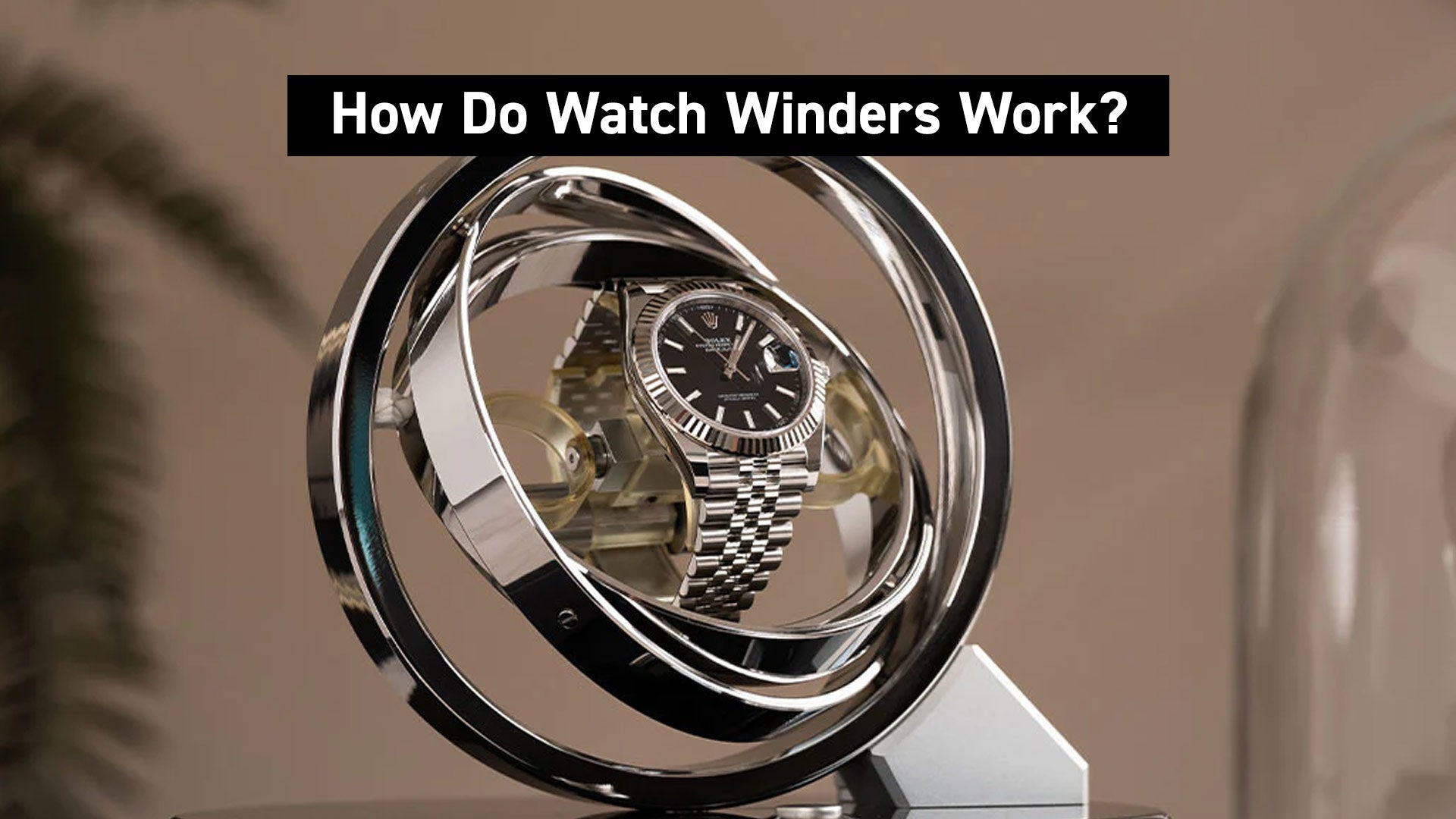When it comes to the maintenance and care of automatic watches, the topic of watch winders often stirs up a mixture of opinions and questions. Are watch winders beneficial, unnecessary, or potentially harmful? In this post, we'll explore how watch winders work and delve into their necessity, advantages, and potential drawbacks.
What is a Watch Winder?
A watch winder is a specialized device designed to keep automatic watches fully wound when not worn. This device mimics the natural motion of the wrist, ensuring that the watch's mechanism remains active, thus maintaining accurate time and date functions. It's particularly useful for watches with complex features like perpetual calendars or moon phases, which can be tedious to reset after the watch stops.
 (One Of The Many Different Types Of Watch Winders)
(One Of The Many Different Types Of Watch Winders)
How Does a Watch Winder Function?
The primary function of a watch winder is to produce a gentle rotation, simulating the movement a watch experiences on the wrist. This action keeps the mainspring of an automatic watch wound, ensuring continuous operation. Quality watch winders offer customizable settings, such as the number of turns per day (TPD) and the direction of rotation, catering to the specific requirements of different watch models.
Are Watch Winders Good for Your Watch?
For collectors and enthusiasts with an array of watches, a winder can be a valuable tool. It ensures that each piece in the collection is ready to wear at a moment's notice, with all functions set correctly. This is especially true for watches with intricate complications that require meticulous setting.
Potential Drawbacks of Watch Winders
However, the question of whether a watch winder might cause harm to a watch is worth considering. Continuous operation without rest can lead to increased wear and tear over time. It's essential to select a high-quality winder with settings that match your watch's specifications to minimize any potential risk.
Are Watch Winders Necessary?
The necessity of a watch winder depends largely on your collection and lifestyle. If you frequently rotate between several automatic watches, a winder can keep your unworn pieces accurate and ready. On the other hand, for a minimal collection or watches with simpler complications, manually winding your watch when needed is perfectly adequate.
 (A Rolex On A Watch Winder)
(A Rolex On A Watch Winder)
Frequently Asked Questions
1. Are Watch Winders Bad for Watches?
No, watch winders are not inherently bad for watches. Quality winders mimic the natural movement of the wrist, ensuring that automatic watches stay wound without causing harm. However, it's crucial to select a winder that aligns with the specific requirements of your timepiece.
2. Is It Worth Getting a Watch Winder?
Whether a watch winder is worth the investment depends on your lifestyle and watch collection. For enthusiasts with multiple automatic watches, a winder is invaluable for keeping timepieces ready to wear and maintained. For those with a single watch that's worn daily, a winder might be less essential.
3. Is It OK to Put a Rolex in a Watch Winder?
Yes, it is perfectly fine to put a Rolex, or any other high-quality automatic watch, in a watch winder. Ensure that the winder is set to the correct specifications for your Rolex to maintain its precision and care.
4. How Long Should a Watch Be on a Winder?
The duration a watch should stay on a winder varies based on the watch's power reserve and the winder's settings. Generally, keeping a watch on a winder until it is fully wound is sufficient. Most modern winders have timers to prevent overwinding.
5. Why Is a Watch Winder So Expensive?
The cost of watch winders can be attributed to factors like build quality, materials, brand prestige, and additional features like multiple winding slots or advanced controls. High-quality winders offer precise control and reliability, which are essential for maintaining luxury automatic watches.
6. Is It OK to Leave an Automatic Watch in a Winder?
Yes, it is generally safe to leave an automatic watch in a winder. This can be particularly beneficial for watches with complex features like calendars or moon phases, as it keeps them set correctly.
7. How Often Should I Put My Watch on the Winder?
The frequency of using a watch winder depends on your watch's power reserve and how often you wear it. Watches with short power reserves or those worn less frequently may benefit from more regular winding.
8. What Is the Best Setting for a Watch Winder?
The best setting for a watch winder depends on the specific requirements of the watch, such as the direction of winding (clockwise, counter-clockwise, or bi-directional) and the number of turns per day (TPD). Consult your watch’s manual or manufacturer for optimal settings.
9. Can a Watch Winder Overwind a Watch?
Modern automatic watches and quality watch winders are designed to prevent over winding. Automatic watches typically have a mechanism that disengages the winding process once fully wound, and good winders have settings to control the winding process.
Conclusion
While watch winders offer convenience and are beneficial for maintaining complex timepieces, they are not an absolute necessity for every collector. Understanding your collection and the specific needs of each watch will guide you in deciding whether a watch winder is a worthy investment for you. Read our More Blogs.










Are Apple Watches Waterproof?
Are Watch Batteries All The Same?